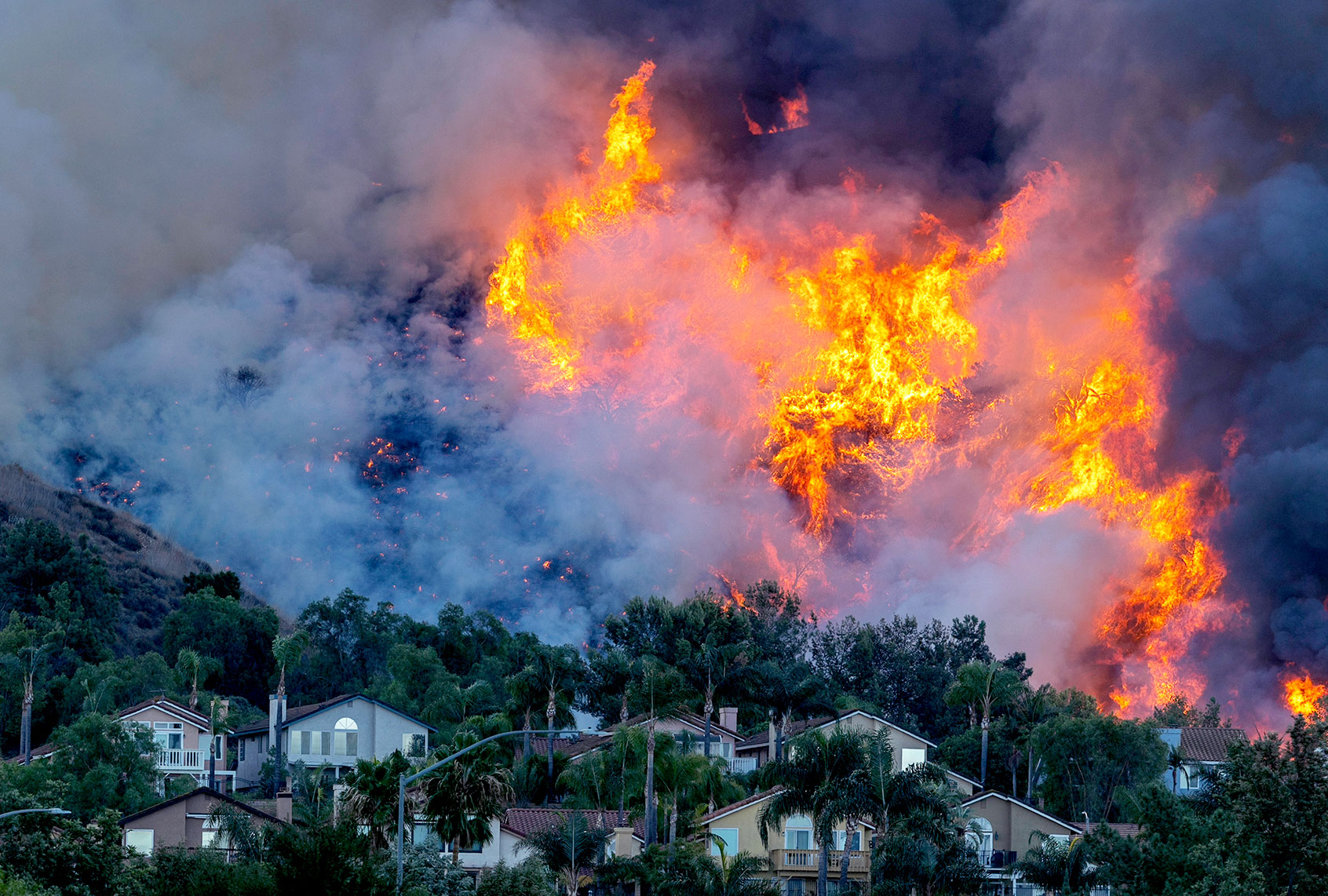Earlier this April, researchers at San José State University’s Wildfire Interdisciplinary Research Center in Northern California were gathering chamise at Blackberry Hill, a site in the nearby Santa Cruz Mountains. In the past few years, it was a site that they had revisited to gather samples of the native shrub. While surveying the land at the site, the researchers made a disconcerting discovery: new, green growth was nowhere to be found.
“Wow, never seen April fuels look so… dry,” the research center tweeted.
In a separate tweet, the researchers stated that fire season in 2021 was looking “grim.” The reason? This year’s live fuel-moisture content (FMC), a metric which measures the ratio of moisture to natural combustible material, is historically low. Average fuel-moisture content in the wild is 137 percent; low is usually considered to be 115 percent. Right now, in 2021, the Northern California region is at 97 percent. Lower fuel-moisture content means higher flammability, and therefore higher chances of wildfires.
“Fire danger is a function of not only the weather, but the condition of the fuels — and the most important thing about the fuels is their moisture content,” said Craig Clements, a professor and director of the Wildfire Interdisciplinary Research Center at San José State University. Clements said he was “shocked” that they didn’t see new growth.
Every year, for two weeks during the spring, Clements and his colleagues go to the same three sites near the Santa Cruz mountains to take samples of scrub clippings to measure the FMC. Usually, April is a good month for new growth and moisture. It’s when Clements and the other researchers expect to measure their highest FMC ratios. Hence why the low ratio and lack of new growth was so shocking.
Clements checked in with other researchers who sampled various sites around the state of California and found that an astonishing number of sites are reportedly drier than normal.
“Some sites have new growth, but it’s still not what we expect in a normal year, and this is directly related to drought,” Clements said. “No rain, or low precipitation, equals drier-than-average fuel moistures.”
Indeed, the state of California has found itself in yet another drought this year. Meaning the likelihood of another severe wildfire season following a catastrophic 2020 wildfire season is high.
But it’s not just California. It’s the entire West Coast that is poised to have a wildfire season more catastrophic than the last. Indeed, the combination of low winter rainfall, fewer new shrubs and plant growth this spring, and a predicted dry summer are of great concern to climatologists and wildfire researchers.
Want more health and science stories in your inbox? Subscribe to Salon’s weekly newsletter The Vulgar Scientist.
The upcoming wildfire season could top even 2020, which, for the state of California, was its most severe in modern history. Over 10,000 wildfires tore through the state; nearly 4.2 million acres burned. Its northern neighbor Oregon also experienced one of its most destructive wildfire seasons in modern history, as did the state of Washington. In total, wildfires burned 10.2 million acres on the West Coast, killing at least 37 people and causing over $19.8 billion in damages.
“The long-term fire weather forecast doesn’t look good,” said Susan Prichard, a fire ecologist at the University of Washington. Prichard agreed that one of the main reasons was that “in parts of all of California and a lot of the Southwest, fuels are already dry.”
Nicholas Bond, a climatologist for the state of Washington and principal research scientist at the University of Washington, said that the state of Washington had a higher-than-normal snowpack this winter, which was quite wet. That might seem like good news. Yet historically, there is a trend over the past decade of increasingly destructive wildfires each year.
“That trend is staring us in the face,” Bond said. He noted that an anticipated hot, dry summer will cause the snowpack to melt. “Even though we have right now an abundant snowpack right now, that’s not going to last forever,” he added.
As the snow melts in the later part of the summer, the landscape dries out and becomes prime fuel for wildfires, with the exception of the highest elevations in the mountains.
“It helps to have those great snowpacks for various reasons — for forest health, it’s a good thing,” Bond said. “But even if you have a good snow year like we have right now, you can have a bad fire season.”
In spring 2020, wildfire researchers began expressing their concerns about a severe wildfire season. But strange weather events, like lightning storms in California, made matters worse.
Bond said weather forecasters predict a hot and dry summer across the West Coast, but it can’t be predicted now if there will be strong winds or similar storms.
“We can’t anticipate whether we’re going to have one of those [weather events] or not — chances are there won’t be anything of that severity this year, but that’s kind of a wild card,” Bond said. “Climate change is a real thing, and this is one of the manifestations that we’re having in the West.”
As Prichard explained, the fire season is not entirely in the hands of Mother Nature — there’s a human factor, too.
“The dice are loaded, but we still get to roll the dice,” she said, paraphrasing a colleague. “I thought that that was a perfect way to describe the upcoming fire season because with these dry fuels and these longer, hotter, often windier summers that we’re getting. But the variable that we don’t know about is lightning and human fire starts.” And that last possibility, of course, is preventable.

